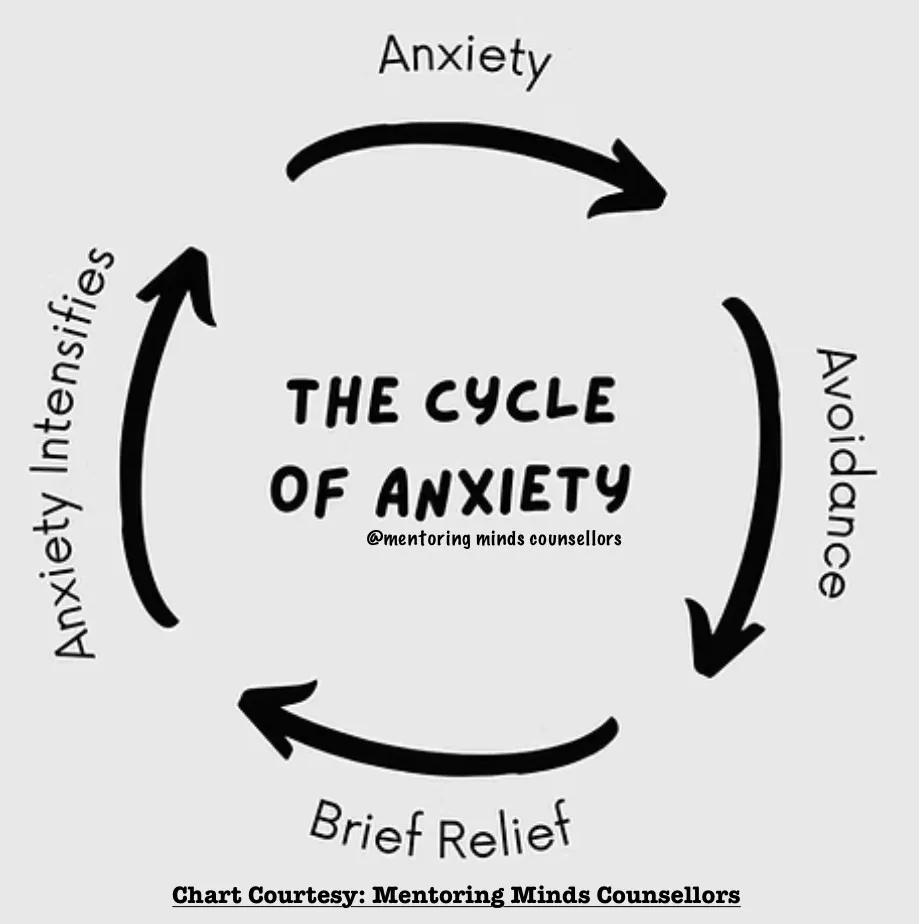Anxiety often feels like an endless loop, where every thought, feeling, and action seems to reinforce the next wave of worry. It’s like a hamster wheel that you can’t seem to get off, no matter how hard you try. The cycle of anxiety can be overwhelming, but understanding how it works is the first step in breaking free.
The Beginning: A Trigger
It often starts with a trigger something that causes a moment of unease. This could be anything: a stressful work situation, a looming deadline, an argument with a friend, or even something more internal, like the fear of the unknown. Our brains are wired to detect potential threats, and the feeling of anxiety is a natural response to those perceived dangers. But for many, the trigger might be minor or even something that wouldn’t bother others, yet it sends the body and mind into overdrive.
The Spiral: Thoughts Amplifying Anxiety
Once the trigger hits, the mind begins to race. It starts to play through worst-case scenarios: “What if I mess up?” “What if I’m not good enough?” “What if something bad happens?” These intrusive thoughts feed the anxiety, making it feel bigger than it is. The more you think about it, the more your body reacts your heart races, your palms sweat, and your muscles tense up.
It’s easy to get trapped here, believing that your anxious thoughts are valid and that something terrible is about to happen. The mind tends to blow things out of proportion, often focusing on negative outcomes rather than the more realistic possibilities. This is where the cycle picks up speed.
The Response: Avoidance or Overcompensation
As anxiety rises, people typically respond in one of two ways: they either avoid the situation altogether, or they overcompensate by trying to control every possible outcome. Both responses reinforce the anxiety cycle.
- Avoidance: If the anxiety feels too overwhelming, you may decide to avoid the situation that caused it. While this might provide short-term relief, avoidance only strengthens the belief that the anxiety is a legitimate threat. It prevents you from facing the fear and learning that you can handle the discomfort.
- Overcompensation: On the other hand, some people try to control everything around them, taking excessive steps to ensure that nothing goes wrong. This could mean overworking, double-checking things, or becoming fixated on the fear of failure. But this response can be draining, leading to burnout and further anxiety.
The Aftermath: Regret and Self-Doubt
Once the anxious situation has passed whether through avoidance or overcompensation there’s often a feeling of regret or self-doubt. You might wonder, “Why did I let myself get so worked up over nothing?” or “Why couldn’t I just handle it?” This feeds into a sense of shame or frustration, further reinforcing the cycle. The anxiety doesn’t go away; it just shifts to another trigger, and the loop continues.
How can I break the Cycle?
- Challenging The Thoughts: One of the most effective ways to break the cycle is to challenge the anxious thoughts. Ask yourself: “What evidence do I have that this will happen?” or “Is this thought based on reality, or is it just my anxiety talking?” Realizing that not every anxious thought is true can help create some distance from the feelings.
- Facing The Fears: Rather than avoiding the source of anxiety, try exposing yourself to it in small, manageable steps. This allows you to build confidence and show yourself that you can handle discomfort without being overwhelmed by it.
Moving Forward
We at Mentoring Minds Counsellors understand that The cycle of anxiety can feel like a never-ending loop, but it doesn’t have to define your life. By understanding how it works, challenging your thoughts, and facing your fears, you can begin to break free. It’s a journey, one step at a time, but with patience and practice, you can take back control and find peace in the present moment.
Anxiety doesn’t have to hold you captive. With the right tools and mindset, you can move beyond the cycle and start living with more calm and confidence.


Leave a Comment